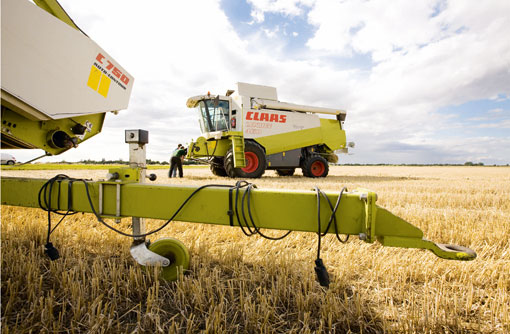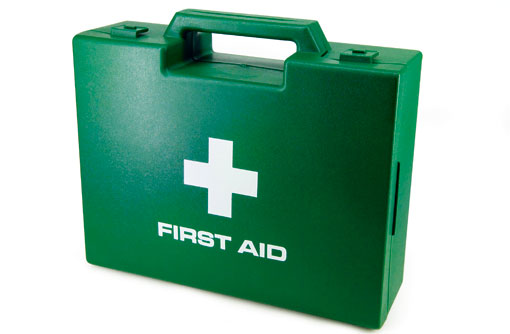Team approach to cutting on-farm accidents

Farmers’ wives and daughters are being targeted as potential leaders of farm health and safety in a bid to cut the number of fatalities and accidents in agriculture.
Rural insurer NFU Mutual has begun a series of workshops aimed specifically at giving women the confidence and information to make farms a safer place.
The women-only workshops feature first-aid training, areas to look for potential hazards, information on legal requirements of on-farm safety and tips on how to discuss health and safety issues without appearing to “nag” the men in their lives.
The insurer hopes the sessions will help improve agriculture’s safety record, which has seen 455 fatalities in the past decade, despite just 1.5% of the population being employed in the industry.
Gill Bolton, NFU Mutual agency development manager, said the insurer wanted to empower women to improve farming’s safety record as they were the hub of the farm. “Women are the people who keep things going and act as the conscience on the farm,” she said.
“It’s not about nagging their husbands, it’s getting farmers to realise the effects an accident can have not just on the farm business, but to their families and their whole lives.”
Ms Bolton came up with the idea for the training days after a worker was crushed between a tractor and a loader and killed at her family’s farm in Worcestershire 10 years ago.
While the police and the Health and Safety Executive cleared the farm of any blame, Ms Bolton said the trauma of the event would never leave her, her family or farm staff.
“Farming is a dangerous industry to be involved in,” she said. “When things are busy and time is short, people take risks they wouldn’t ordinarily take.
“You perhaps don’t take the time to look around and see where the potential accidents lie either. That’s where women can step in and make a difference.”
Natalie Lloyd, health and safety consultant for NFU Mutual risk management services, said farm deaths and accidents had declined in recent years, but there was still far more to be done to improve the record.
“As well as the legal duties to keep you and your staff safe, there are also moral pressures in farming because many farms are family businesses and accidents involve loved ones,” she said.
“Unfortunately, many accidents on farms also involve children and dealing with the guilt of an accident like that is something people never get over.
“We want women to choose at least one thing to do – even if that’s just ringing your husband at lunchtime to ask how his day’s going so that you can check he’s OK.
“Women are the powerhouses of the businesses, they really can make a difference.”
Jill Pierce, who farms 160ha with her husband in Wigstone, Leicestershire, said NFU Mutual’s first training day in Lincolnshire had given her the confidence to go home and have a closer look at what could be improved on her farm.
“We already do quite a lot already, making sure we regularly check the man cage, compressors and machinery before we start using them, said Mrs Pierce.
But she added that there are definitely a lot of farmers out there who need reminding by their wives, so days like this were very worthwhile.
“With the ladies coming together it helps because they can push the husbands into doing a bit more,” said Mrs Pierce.
NFU Mutual is running a range of local farm safety events and training courses throughout 2012. For details, contact your local NFU Mutual branch office.
| STAYING WITHIN THE LAW |
|---|
| Under the Health and Safety at Work Act 1974, as an employer the burden of proof is on you to prove that you provided a safe place to work. |
For more information on the rules and regulations, visit the HSE’s website |
Keep your phone at hand
“A lot of people are found a long way from the scene of the accident because they don’t have the ability to raise the alarm and try to crawl to get help,” said Natalie Lloyd of NFU Mutual. “Always make sure you have your mobile phone somewhere near you.”
Farmers who had phones with a poor signal should check with other mobile providers to see if they cover the area, she added. And even if it appeared you had no signal, it was always worth trying to make an emergency call as both 999 and 112 used masts from all networks.
“If you do make an emergency call, it’s best to use 112,” she added. “It’s easier for the emergency services to trace where you made the call using GPS.
“If the poor signal won’t let you call, try sending a text message instead as texts often get through when calls won’t.
“There’s a 999 text service initially set up for people with hearing problems; you need to register your phone with them to use the system.”
For more information go to the Emergency Services SMS website.
St John Ambulance first-aid tips

1. Assess the situation. Don’t rush in and put yourself in danger. Think what hazards might be around, such as chemicals, glass and loose animals. Assess how many are injured and how you are going to get help – if you are in a remote spot, will an ambulance be able to reach you by road or do you need an air ambulance?
2. If you call for an air ambulance, as it arrives move away from the casualty and get to a clear space. Wait with your arms above your head so the rescue crew can see where they need to be.
3. Try to keep the casualty warm. Shock causes people to feel cold, so improvise by using coats and sacks to keep their temperature up.
4. Don’t move a casualty unless it’s really necessary. You can support them with boxes and straw bales to keep them still.
5. Talk to the injured person – it allows you to assess their condition and helps to keep them calm.
6. If the casualty’s not talking, don’t assume they’re unconscious. Ask them to open their eyes and, if that doesn’t work, tap them firmly on the shoulder.
7. If they don’t respond, check they are breathing and not losing blood. Tip and lift the head back to open up the airway.
8. Get any bleeding under control by applying pressure to the wound – get the casualty to do it if they can to give them something to do and to keep your hands free. Elevate the wound if possible.
For more tips and advice on first aid, visit the St John Ambulance website
A St John Ambulance iPhone app is also available to download form the iTunes Store
